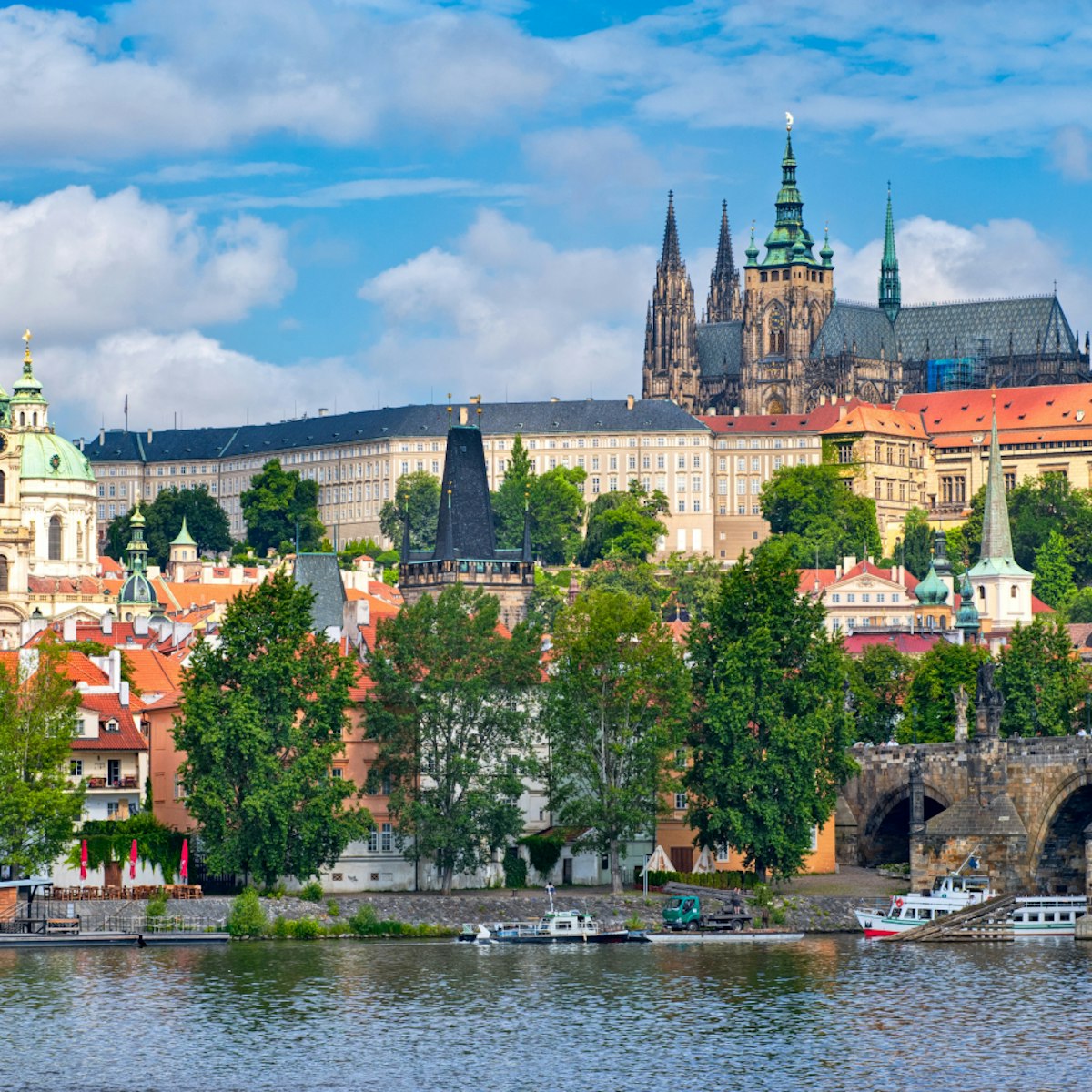Following the tourist crowds downhill from the castle via Ke Hradu, you will arrive at Nerudova, architecturally the most important street in Malá Strana – most of its old Renaissance facades were ‘baroquefied’ in the 18th century. It’s named after the Czech poet Jan Neruda (famous for his short stories, Tales of Malá Strana), who lived at the House of the Two Suns from 1845 to 1857.
The House of the Golden Horseshoe is named after the relief of St Wenceslas above the doorway – his horse was said to be shod with gold. From 1765 Josef of Bretfeld made his Bretfeld Palace a social hotspot, entertaining the likes of Mozart and Casanova. The baroque Church of Our Lady of Unceasing Succour was a theatre from 1834 to 1837, and staged Czech plays during the Czech National Revival.
Built in 1566, St John of Nepomuk House is adorned with the image of one of Bohemia’s patron saints, while the House at the Three Fiddles, a Gothic building reconstructed in Renaissance style during the 17th century, once belonged to a family of violin makers.
Most of the buildings bear typical Prague house signs.







